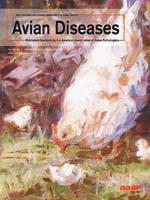In the spring of 2012 an outbreak of H7N3 highly pathogenic (HP) avian influenza virus (AIV) occurred in poultry in Mexico. Vaccination was implemented as a control measure, along with increased biosecurity and surveillance. At that time there was no commercially available H7 AIV vaccine in North America; therefore, a recent H7N3 wild bird isolate of low pathogenicity from Mexico (A/cinnamon teal/Mexico/2817/2006 H7N3) was selected and utilized as the vaccine seed strain. In these studies, the potency and efficacy of this vaccine strain was evaluated in chickens against challenge with the 2012 Jalisco H7N3 HPAIV. Although vaccine doses of 256 and 102 hemagglutinating units (HAU) per bird decreased morbidity and mortality significantly compared to sham vaccinates, a dose of 512 HAU per bird was required to prevent mortality and morbidity completely. Additionally, the efficacy of 11 other H7 AIV vaccines and an antigenic map of hemagglutination inhibition assay data with all the vaccines and challenge viruses were evaluated, both to identify other potential vaccine strains and to characterize the relationship between genetic and antigenic distance with protection against this HPAIV. Several other isolates provided adequate protection against the 2012 Jalisco H7N3 lineage, but antigenic and genetic differences were not clear indicators of protection because the immunogenicity of the vaccine seed strain was also a critical factor.
Potencia, eficacia y mapeo antigénico de vacunas con el virus de la influenza aviar H7 contra un virus altamente patógeno H7N3 del año 2012 de México.
En la primavera del 2012 se presentó un brote del virus de influenza aviar de alta patogenicidad subtipo H7N3 en la avicultura de México. La vacunación se llevó a cabo como medida de control, junto con el aumento de la bioseguridad y la vigilancia. En ese momento no había una vacuna con el subtipo H7 disponible comercialmente en América del Norte, por lo tanto, se seleccionó un aislamiento reciente de baja patogenicidad subtipo H7N3 aislado de aves silvestres de México (A/Pato colorado/México/2817/2006 H7N3) y se utilizó como cepa semilla para la vacuna. En estos estudios, se evaluó la potencia y la eficacia de esta cepa de vacuna en pollos contra el desafío con el virus de alta patogenicidad H7N3 de Jalisco del 2012. Aunque las dosis vacunales de 256 y 102 unidades de hemaglutinación (HAU) por ave disminuyeron la morbilidad y la mortalidad de manera significativa en comparación con las aves no vacunadas, se requirieron dosis de 512 unidades hemaglutinantes por ave para prevenir la mortalidad y la morbilidad completamente. Además, se evaluó la eficacia de otras 11 vacunas con el subtipo H7 y se evaluó un mapa antigénico con los datos por la prueba de inhibición de la hemaglutinación con todas las vacunas y los virus de desafío, para identificar otras cepas de vacunas potenciales y para caracterizar la relación entre la distancia genética y antigénica con protección contra este virus de alta patogenicidad. Otros aislamientos confirieron una protección adecuada contra un virus del linaje H7N3 2012 de Jalisco, pero las diferencias antigénicas y genéticas no fueron indicadores claros de protección debido a que la inmunogenicidad de la semilla vacunal fue también un factor crítico.





